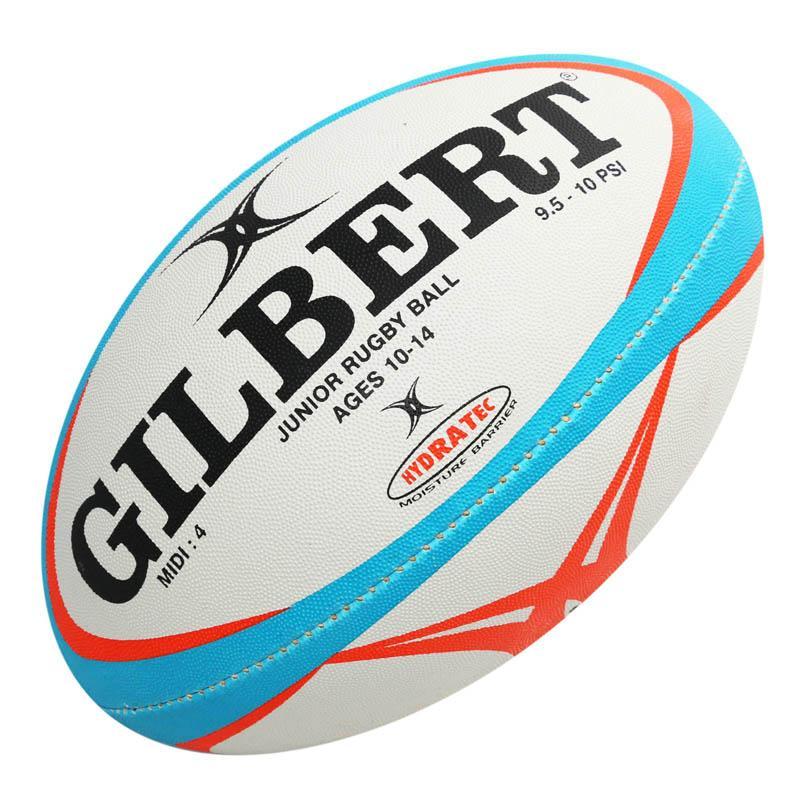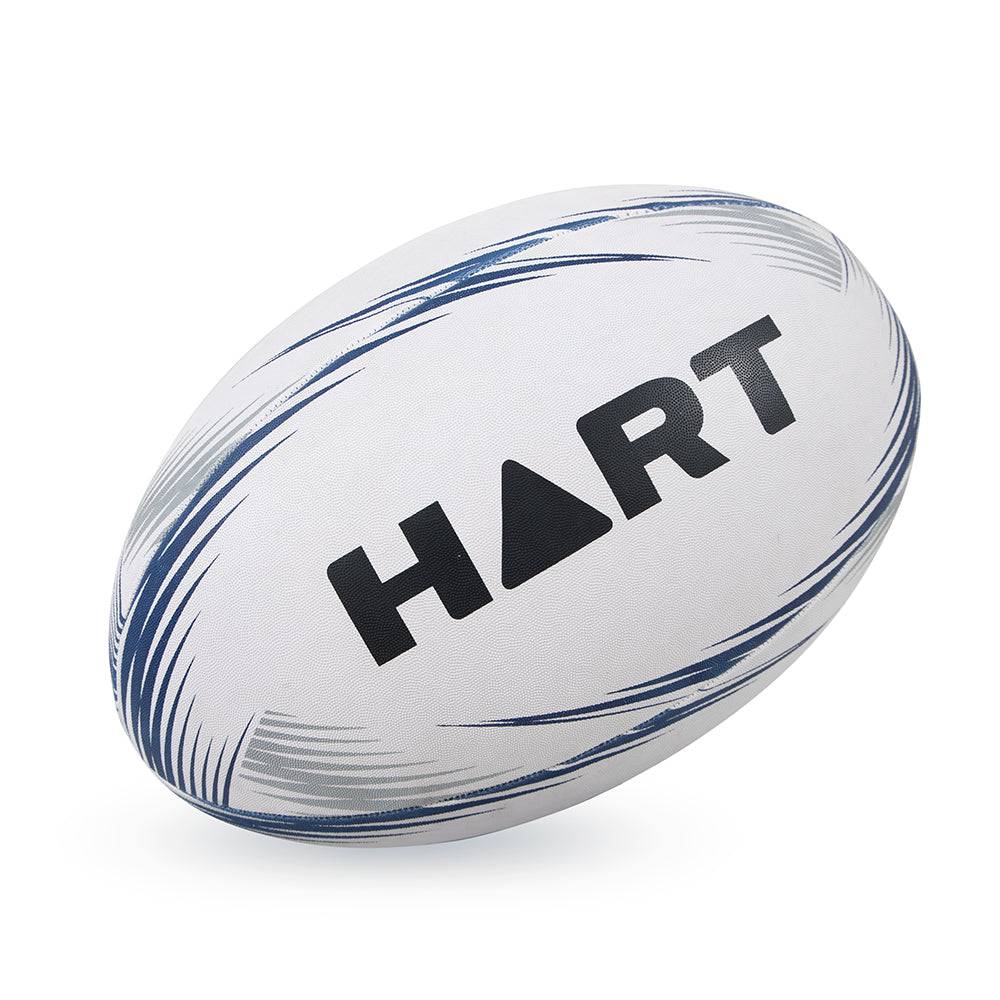Rugby is a dynamic and exciting sport that requires a specific set of equipment. Among the most vital pieces of equipment is the rugby ball. Choosing the right rugby ball is crucial for players looking to enhance their performance on the field. With various types of rugby balls available, it can be challenging to know which one will best suit your needs. In this comprehensive guide, we will explore the different types of rugby ball, their features, and how to choose the right one for optimal performance.
Understanding Rugby Ball Types
Different Sizes of Rugby Balls
Rugby balls come in several sizes, with each size designed for different age groups and levels of play. The most commonly used sizes are Size 3, Size 4, and Size 5.
- Size 3 is typically used for children under the age of 8. These balls are smaller and lighter, making them easier for young players to handle. They help develop basic skills such as passing and catching without overwhelming the child.
- Size 4 is generally used for youth players aged 8 to 14. This size strikes a balance between being manageable for younger players while providing a more realistic experience as they transition to the next size.
- Size 5 is the official size for adult rugby. It is the standard ball used in both club and international matches. Players of all levels should get accustomed to handling Size 5 balls, as they provide the best representation of what they will encounter at competitive levels.
Different Types Based on Game Format
Rugby is a sport played in various formats, each requiring unique types of rugby balls. The two main formats are rugby union and rugby league. While both formats use a Size 5 ball, there may be slight differences in design and construction.
- Rugby Union balls are more oval-shaped and feature a larger profile. This shape is intended for both passing and kicking, allowing players to achieve better distance when kicking for goal or trying to clear their half.
- Rugby League balls tend to have a slightly reduced diameter, making them easier to pass over shorter distances. This design caters to the fast-paced and strategic nature of rugby league, where quick passing and agility are key components of gameplay.
Understanding these distinctions is important, as the right rugby ball can significantly impact a player’s experience and performance on the field.

Materials Used in Rugby Balls
Synthetic vs. Natural Leather
Manufacturers typically make rugby balls from two main types of materials: synthetic materials and natural leather. Each material has its advantages and disadvantages.
- Synthetic materials, often made from rubber or polymer, are commonly used for recreational and training balls. These balls tend to be more durable and weather-resistant, making them ideal for use in various conditions. They also offer a consistent grip, which is essential for players learning the fundamentals of the game.
- Natural leather is traditionally used in high-quality match balls. Leather balls provide superior grip and handling, especially as they break in with use. However, they are typically less durable when exposed to wet conditions and may require more care. Players who use leather rugby balls should be cautious about using them in heavy rain, as they can become slippery.
Choosing between synthetic and leather materials will depend on your playing level and individual preferences. For competitive players, a leather ball may be the best choice, while those participating in casual games might prefer the benefits of synthetic options.
Grip and Texture
The grip and texture of a rugby ball are critical factors that impact performance. Modern rugby balls often come with specific grip patterns designed for enhanced control.
- Many professional-grade balls feature raised seams and textures that create friction when throwing or catching. This enables players to maintain control over the ball, especially in wet or slippery conditions.
- Conversely, training balls may feature smoother surfaces to help younger players focus on catching and passing techniques without disruption.
When selecting a rugby ball, pay attention to the material finish and grip. Testing the ball during practice can ensure it feels comfortable in your hands and provides the control you need during gameplay.

Considering Your Skill Level
Beginners and Youth Players
For beginners and youth players, the primary focus should be on developing fundamental skills. A lighter ball, like Size 3 or Size 4, will be the best option. These sizes are easier to handle and will help build confidence as players learn how to pass, catch, and kick effectively.
Choosing a synthetic ball is often prudent for novice players. Synthetic balls are durable and affordable, making them suitable for practice sessions. Players can learn without worrying too much about damaging an expensive leather ball.
Advanced Players
Advanced players should consider investing in a Size 5 leather rugby ball designed for matches. As they have a higher level of skill, these players will benefit from the superior grip and performance provided by a leather ball. The improved feel for the ball can help with precision during games.
Moreover, players competing at higher levels may want to examine match balls used in their league. Incorporating the same brand and model used in competitions during practice can enhance confidence and comfort, ensuring the player is well-prepared for performance.

Assessing Ball Weight and Balance
Standard Weight Regulations
Most rugby balls must adhere to specific weight regulations for legal play. A standard Size 5 rugby ball should weigh between 410 and 450 grams. Maintaining these weight standards ensures consistency during matches and practice sessions.
For beginner-level players, the weight of the ball can affect how they learn to throw and catch. A lighter ball, while still within regulation, can help young players develop their skills more effectively. As they progress, it is essential to transition to a standard-weight ball for an authentic experience.
The Importance of Balance
The balance of a rugby ball is also crucial to its performance. A well-balanced ball flies through the air more consistently and maintains stability during play. When assessing a ball, consider throwing a few passes to understand how it feels.
The construction of the ball, including its bladder, contributes to its balance. High-quality balls usually feature a latex bladder that helps retain shape and offers excellent balance during kicks and passes. Evaluate the feel of the ball while practicing to determine if it aligns with your performance needs.

Proper Care and Maintenance of Your Rugby Ball
Regular Cleaning Practices
To enhance the longevity of your rugby ball, regular cleaning is essential. After each use, especially during muddy or wet conditions, take the time to wipe the ball clean with a damp cloth. This helps remove dirt and moisture that can cause damage over time.
If the ball becomes particularly dirty, a mild soap and water solution can be used for cleaning. Avoid using harsh chemicals, which can degrade the material. Allow the ball to dry completely before storing it to prevent mold and mildew development.
Proper Storage Methods
When not in use, store your rugby ball in a cool and dry location, away from direct sunlight. Exposure to heat and UV rays can cause the leather to deteriorate or the synthetic materials to warp. If you have multiple rugby balls, consider using a breathable bag or container to keep them organized.
Additionally, avoid over-inflating your ball, as this can impact its shape and performance. Always check the recommended pressure range on the ball and use a pressure gauge to maintain optimal inflation. Caring for your rugby ball helps preserve its quality and extend its lifespan.
Understanding League Requirements
Match Regulations
Different rugby leagues may have specific regulations regarding the type of ball to be used in matches. These regulations include size specifications, material requirements, and branding. Before purchasing a rugby ball, check with your league’s governing body to ensure compliance.
Familiarity with the specific type of ball required can help players adjust their practice to match league conditions. Understanding the match ball enables players to feel comfortable when switching between practice and competition settings.
Selecting the Right Brand
Several reputable brands produce rugby balls, each with unique qualities and official league endorsements. Brands like Gilbert, Mitre, and Adidas offer high-quality options designed for different levels of play. Research various brands to find one that aligns with your needs and budget.
Selecting a ball that is endorsed by your league can be critical, as using unapproved balls in competition can result in penalties. Understanding the brands available will help you confidently make your purchase.

The Importance of Player Feedback
Listening to Your Team
When choosing the right rugby ball, gathering feedback from teammates and coaches is essential. Each player may have preferences regarding ball feel, grip, and performance. Listening to their experiences can provide valuable insights into what to look for in your purchase.
Discussing various balls during practice sessions may reveal differing opinions on which type performs best in particular conditions. Take note of what works for your teammates during games, as this may influence your decision.
Trying Different Balls
Taking the time to practice with different types of rugby balls can also be helpful. Schedule practice sessions where your team tests multiple brands and models to evaluate performance. Pay attention to aspects such as grip, balance, and throwing distance.
Experimenting with different balls during practice allows players to determine their preferences in a low-pressure environment. The feedback gathered from these sessions can assist in selecting a ball that boosts confidence and performance on the field.
Making the Right Choice for Your Rugby Ball
In conclusion, choosing the right rugby ball is crucial for optimal performance on the field. Understanding the different sizes, types, materials, and care techniques will help you select a ball that enhances your gameplay experience. Whether you’re a beginner learning the basics or an experienced player looking for high-quality equipment, the right rugby ball can make a significant difference.
Taking the time to research and try different options will lead you to a ball that fits your style and meets your performance needs. Remember to maintain your rugby ball properly and seek feedback from teammates to ensure you feel confident in your choice. With the right rugby ball in hand, you’ll be ready to enjoy the game and elevate your rugby skills to the next level.
